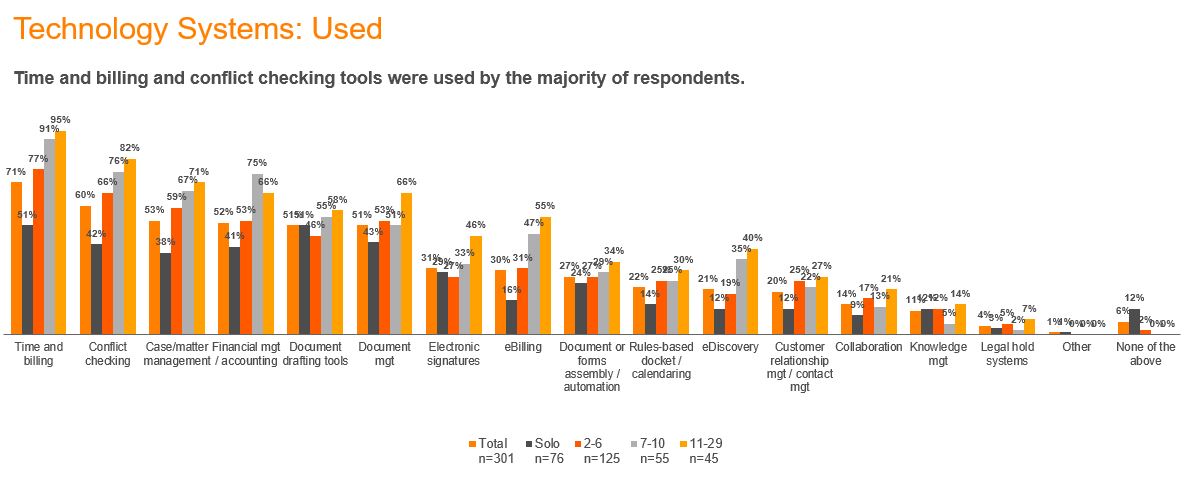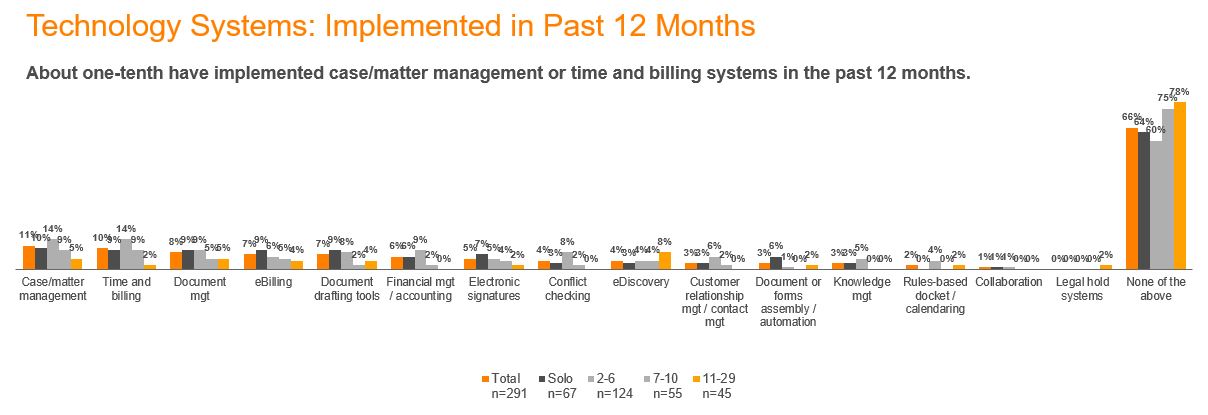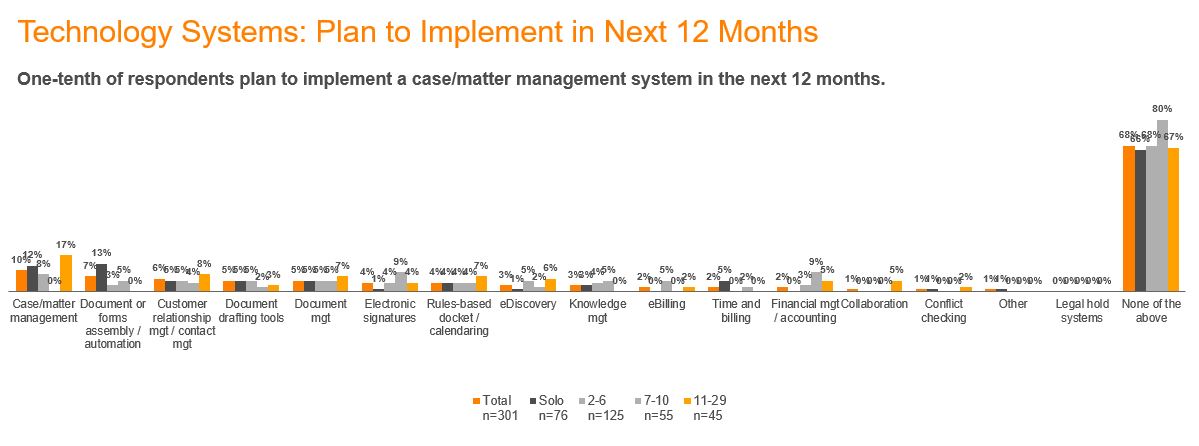This is another in a series of posts about the findings of a new survey of small-solo law firm management conducted by Thomson Reuters Solo and Small Law Firm group to which Thomson Reuters has given me exclusive access. Today I am going to discuss what the survey found about small-firm technology.
Prior posts about the survey:
- This Week In Legal Tech: Exclusive Results Of A New Small-Firm Survey.
- Exclusive Survey Results: Small Firms’ Greatest Challenges And What They’re Doing To Address Them.
- More Exclusive Survey Results: How Small Law Firms Measure Success.
Practice management, not technology, was the central focus of this survey, which covered firms of 1-29 lawyers. Even so, the survey asked firms about the technology they use and their investments in technology.
Two survey questions asked firms about technology they have implemented within the prior 12 months and their plans to implement new technology in the coming 12 months. The questions asked about a variety of common categories of legal technology, such as case/matter management, time and billing, document management, and others.
Overall, 66 percent of small firms say they have not implemented any of these technologies in the prior year and 68 percent say they have no plans to implement any of them in the coming year. In other words, two-thirds of firms have not changed their technology and two thirds have no immediate plans to change their technology.
We do not, of course, know whether it is the same two-thirds for both questions, but clearly there is significant overlap, suggesting that many small firms will implement no changes in technology for at least a two-year span.
This is corroborated by another question in the survey, which asked about areas of investment in 2016. Only a quarter of small firms say that they will spend more on technology and infrastructure, while 72 percent say their tech/infrastructure spending will remain the same. Four percent say they will spend less.
Of those firms that had implemented new technology in the prior 12 months, the five most common forms of technology are:
- Case/matter management (11 percent).
- Time and billing (10 percent).
- Document management (8 percent).
- E-billing (7 percent).
- Document drafting tools (7 percent).
Of firms that plan to implement new technology in the coming 12 months, the five most common forms of technology are:
- Case/matter management (10 percent).
- Document or form assembly/automation (7 percent).
- Customer relationship management or contact management (6 percent).
- Document drafting tools (5 percent).
- Document management (5 percent).
The survey also asked small firms about the kinds of technology they use. Overall, the most common form of technology is time and billing, which 71 percent of lawyers overall say their firm uses. At firms of 11-29 lawyers, 95 percent have time and billing systems, and at firms of 7-10 lawyers, 91 percent do. Among solos, however, only half have time and billing.
The second most common form of technology is conflict checking. Overall, 60 percent of lawyers say their firm has a conflict-checking system.
Just over half of firms (53 percent) have case/matter management systems. Only 38 percent of solos have these systems, while 71 percent of firms in the 11-29 lawyer range have them.
The chart at the top of this post shows results for other types of technology systems covered in the survey.
I am not sure what to make of the finding that relatively few firms are currently upgrading their technology systems or implementing new technologies. On one hand, I would think there would be more active investment in technology, given the greater emphasis in recent years on the benefits of legal technology in driving efficiency.
On the other hand, the need for new technology purchases has somewhat plateaued over the last couple years. That is not to say there is not continuing innovation. But if a firm invested in new computers three years ago, those computers probably still have all the processing power a lawyer would need. If a firm purchased a practice management system three years ago, the system is probably still adequate. If it was a cloud-based system, the updates come automatically with the product.
Perhaps the more significant finding here is how few small firms overall are even using many of these technologies. This is particularly true among solos, where just half use time and billing, just 38 percent use case/matter management, and just 41 percent use financial management or accounting systems.
Except for time and billing, in other words, the majority of solos are not using several key types of legal technology, this survey indicates. Maybe there is a good explanation for why that is, but I can’t think of it.
 Robert Ambrogi Blog
Robert Ambrogi Blog

